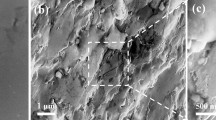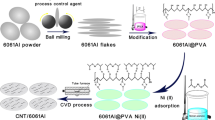Abstract
The effective utilization of CNTs in composite application depends strongly on the ability to disperse CNTs homogeneously throughout the matrix and the interfacial combination is necessary for improving the CNT-based composite properties. In our work, we used surfactant and acid treatment to modify the CNTs surface and then incorporated the functionalized CNTs into various ceramic matrices including oxide and nitride ceramics. The fabrication of ceramic nanoparticle-immobilized CNTs not only improves the homogeneous distribution of CNTs in the ceramic matrices, but also makes the combination between two phases more tight. Mechanical property measurements clealy reveal obvious enhancement confirming the fabrication of true CNT-based composite materials with improved toughness properties. The addition of 0.1 wt% CNTs in the alumina increased the fracture toughness by about 1.6 times from 3.7 to 4.9 MPa.m1/2. For 1 wt% CNTs/BaTiO3composite, the toughness value (1.65 MPa.m1/2) is about 2.4 times than that of pure BaTiO3(0.68 MPa.m1/2). For 5 wt% CNTs/TiN composite, the fracture toughness is 3.81 MPa.m1/2, which is about 1.6 times than that of pure TiN ceramic whose toughness is 2.45 MPa . m1/2.
Similar content being viewed by others
References
A. Peigney, C. Laurent, O. Dumortier, and A. Rousset, J. Eur. Ceram. Soc., 18, 1995 (1998).
G.D. Zhan, J.D. Kuntz, J.L. Wan, and A.K. Mukherjee, Nature Mater., 2, 38 (2003).
R.Z. Ma, J. Wu, B.Q. Wei, J. Liang, and D.H. Wu, J. Mater. Sci., 33, 5243 (1998).
K.R. Han, C.S. Lim, and M.J. Hong, J. Am. Ceram. Soc., 79, 574 (1996).
E.P. Luther, F.F. Lange, and D.S. Pearson, J. Am. Ceram. Soc., 78, 2009 (1995).
G.L. Hwang and K.C. Hwang, J. Mater. Chem., 11, 1722 (2001).
X. Gong, J. Liu, S. Baskaran, R.D. Voise, and J.S. Young, Chem. Mater., 12, 1049 (2000).
J. Sun, L. Gao, and W. Li, Chem. Mater., 14, 5169 (2002).
J. Sun and L. Gao, Carbon, 41, 1063 (2003).
Q. Huang and L. Gao, J. Mater. Chem, 14, 2536 (2004).
L.Q. Jiang and L. Gao, J. Mater. Chem, 15, 260 (2005).
G.Z. Chen, M.S. Shaffer, D. Coleby, G. Dixon, W. Zhou, D.J. Fray, and A.H. Windle, Adv. Mater., 12, 522 (2000).
S. Chang, R.H. Doremus, P.M. Ajayan, and R.W. Siegel, Ceram. Eng. Sci. Proc., 21, 653 (2000).
14 S. Ravindran, S. Chaudhary, B. Colburn, M. Ozkan, and C.S. Ozkan, Nano. Lett., 3, 447 (2003).
Author information
Authors and Affiliations
Rights and permissions
About this article
Cite this article
Gao, L., Jiang, L. & Sun, J. Carbon nanotube-ceramic composites. J Electroceram 17, 51–55 (2006). https://doi.org/10.1007/s10832-006-9935-8
Issue Date:
DOI: https://doi.org/10.1007/s10832-006-9935-8




